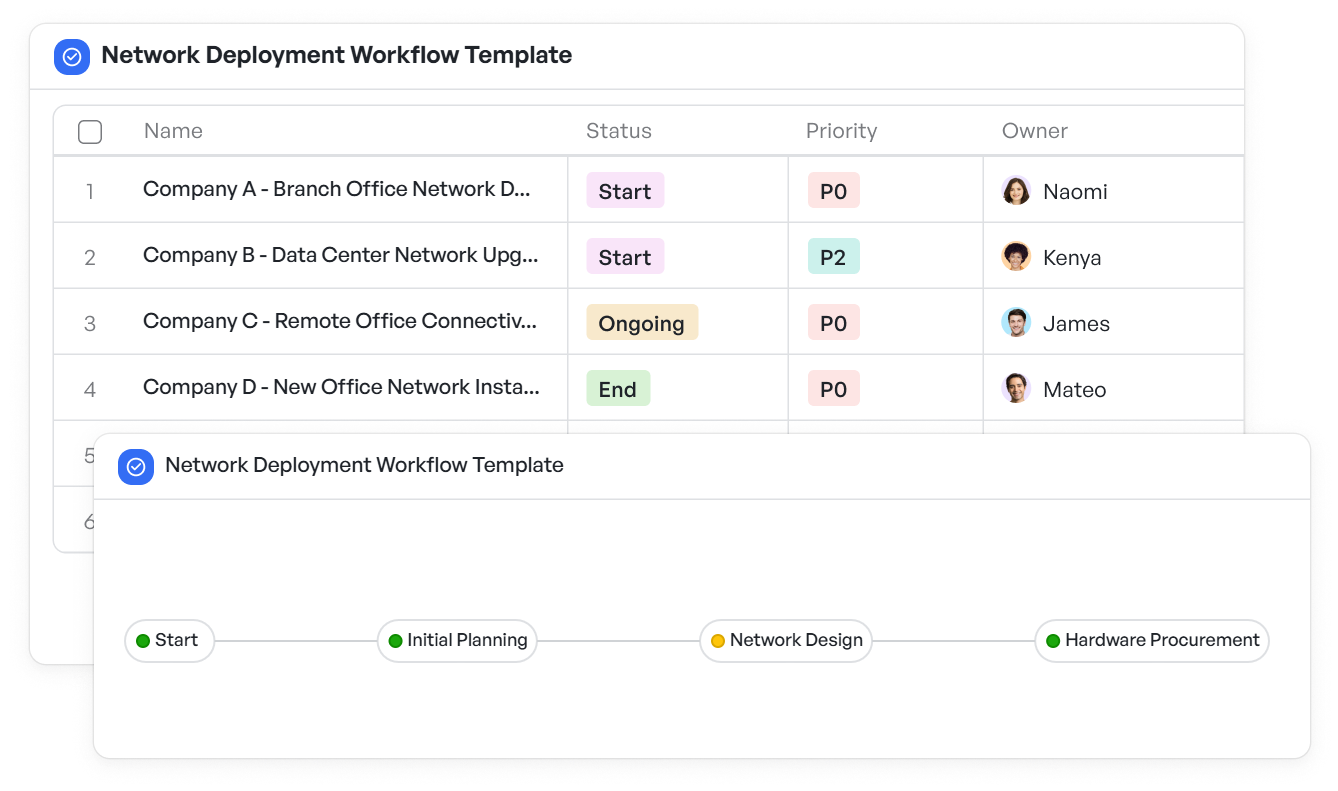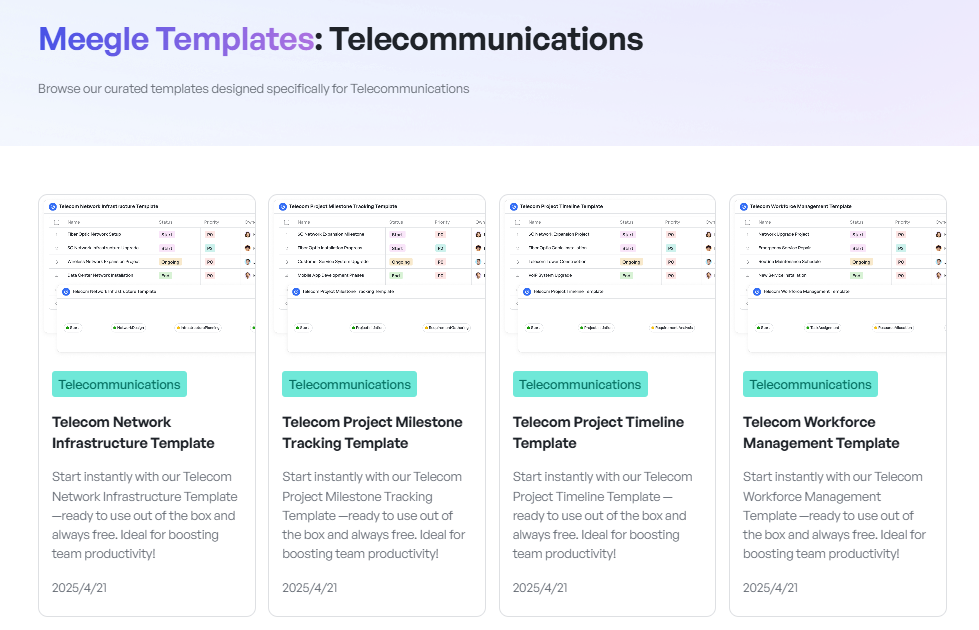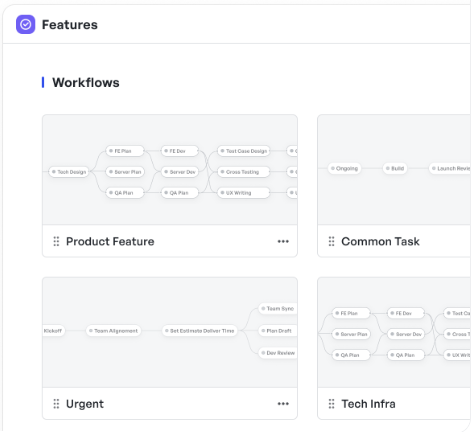How To Implement Agile Modeling In Telecommunications

Telecommunication companies face unique challenges such as rapid technology shifts, complex infrastructure, and high customer expectations.
Agile modeling, a component of the broader Agile methodology, offers a flexible way to plan, visualize, and adapt network projects and operational workflows. By using Agile modeling, telecommunication organizations can better align their teams and accelerate project delivery without sacrificing quality.
This post discusses how Agile modeling applies to telecommunications, focusing on how mid-market and enterprise telecommunication firms can benefit from visual workflows and iterative project management.
Why Agile Modeling in Telecommunications Matters
Telecommunication projects often involve complex infrastructures, strict regulatory requirements, and frequent changes due to technology advancements. Traditionally, many organizations have relied on the waterfall project management methodology, which follows a linear, sequential process with clearly defined phases. Each phase, such as requirements gathering, design, implementation, testing, and deployment, must be completed before moving on to the next.
While Waterfall’s structured approach can offer predictability and clarity, it often lacks the flexibility needed in telecommunication environments where rapid adaptation is critical. Changes late in the project can lead to costly delays, miscommunication, and missed opportunities.
In contrast, Agile modeling offers a more flexible and iterative approach. Projects are broken down into smaller, manageable increments with stakeholder engagement.
This allows teams to respond quickly to changes in technology, regulations, and customer needs. Agile emphasizes frequent feedback and collaboration, helping teams reduce risks and improve delivery quality.
The key differences between the waterfall and Agile model include:
| Aspect | Waterfall | Agile |
|---|---|---|
| Flexibility | Low; changes are costly and difficult to implement once phases are underway | High; designed to embrace change and adapt throughout the project lifecycle |
| Feedback Loop | Occurs late, usually after testing or deployment | Continuous, with frequent reviews and adaptations |
| Handling Complexity | Linear and sequential; may miss interdependencies or emerging issues early | Iterative and incremental; detects issues and risks early |
| Stakeholder Involvement | Limited to initial planning and final approval phases | Ongoing collaboration with all stakeholders |
| Risk Management | Reactive; risks may surface late | Proactive; risks identified and addressed continuously |
| Documentation | Extensive upfront documentation required | Documentation is just enough to support collaboration and flexibility |
If you’re interested in exploring this topic further, you could refer to the article Waterfall vs. Agile
5 Key Benefits of Agile Modeling in Telecommunications
Agile modeling empowers telecommunication teams to manage complex projects more effectively by providing clarity, flexibility, and enhanced collaboration.
Here’s how Agile modeling benefits your team, supported by specific templates designed for the telecommunications industry:
1. Visualize Complex Networks
Create detailed models of network setups, service layers, and dependencies using the network deployment workflow template.
This visual clarity helps teams understand intricate infrastructure components and their interactions at a glance.
 Network setup visualization and streamlined deployment management
Network setup visualization and streamlined deployment management2. Improve Cross-Functional Collaboration
Align engineering, operations, compliance, and other departments around shared goals with a service activation process template.
This template facilitates transparent communication and coordination, ensuring all teams stay synchronized throughout the project lifecycle.
 Streamlines service activation processes to boost team coordination and ensure timely project delivery
Streamlines service activation processes to boost team coordination and ensure timely project delivery3. Adapt to Change Quickly
Stay agile by iteratively updating project models in response to emerging technologies or evolving regulatory requirements.
The telecom project change management template helps track and manage changes efficiently, minimizing disruption while maintaining control.
 Enables efficient tracking and control of project changes to minimize disruption and keep timelines on track
Enables efficient tracking and control of project changes to minimize disruption and keep timelines on track4. Reduce Project Delays
Analysing bottlenecks and potential risks early allows teams to address issues before they escalate. Continuous feedback and proactive problem-solving keep projects moving smoothly and on schedule.
5. Enhance Quality and Regulatory Compliance
Integrate quality assurance checkpoints and compliance requirements into workflows using a regulatory compliance checklist.
This ensures that projects meet all necessary standards without compromising speed or flexibility.
By leveraging these tailored templates within Agile modeling, telecommunication teams can improve transparency, responsiveness, and overall project success.
Implementing Agile Modeling in Telecommunication Projects
Successful implementation requires structured steps. Here’s how telecommunication teams can start:
1. Map Existing Processes Visually
Begin by capturing current network deployment and service processes using visual workflows. This creates a shared understanding among team members and ensures clarity.
2. Define Project Features and Deliverables
Break down telecommunication projects into distinct features such as equipment installation, software integration, or customer onboarding steps.
3. Establish Iterative Modeling Cycles
Use Agile modeling to continuously refine processes based on feedback from engineering, field teams, and compliance experts.
4. Integrate Quality and Compliance Checks
Incorporate visual checkpoints to track testing, certification, and regulatory approval steps, supported by Meegle’s compliance-focused templates.
5. Use Collaborative Platforms for Real-Time Updates
Teams must stay aligned on progress, assign tasks, and identify blockers using shared models that are accessible in real-time.
Visual Workflow Templates for Agile Modeling in Telecommunications
To support Agile modeling, telecommunication teams can use tailored templates such as:
- Telecom project milestone tracking template
- Telecom project documentation template
- Telecom Project resource allocation template
- Telecom network testing template
These templates help structure complex projects while allowing flexibility for changes.
 Telecommunication templates offered by Meegle
Telecommunication templates offered by MeegleOperations and Customer Service for Agile Modeling in Telecommunications
Agile modeling isn’t limited to engineering. Operations teams can map support workflows, incident handling, and escalation procedures to create clear, visual representations of their processes.
This clarity helps reduce resolution times by ensuring that every team member understands their role and the steps needed to address issues promptly. Visual workflows also promote accountability and streamline communication across departments, which leads to faster problem-solving and improved customer satisfaction.
By embracing Agile modeling, operations can become more responsive and adaptive to changing situations, ultimately driving better service outcomes.
 Workflow visualization in Meegle
Workflow visualization in MeegleLearn more about Agile project management to enhance your operations with Meegle’s resources.
Improving Telecommunication Project Delivery and Team Alignment
Adopting Agile modeling enables telecommunication companies to accelerate network deployments, adapt to technological and regulatory changes faster, and improve cross-team communication. Visual workflows help teams spot risks early, reduce delays, and deliver consistent service quality.
For mid-market and enterprise telecommunication firms, Agile modeling bridges the complexity gap between hardware, software, and operations. It offers a flexible yet structured way to manage projects and workflows collaboratively.
Transform how your telecom team models, plans, and delivers—Meegle makes Agile Modeling feel easy.
The world’s #1 visualized project management tool
Powered by the next gen visual workflow engineRead More
Check All BlogsStart creating impactful work today



